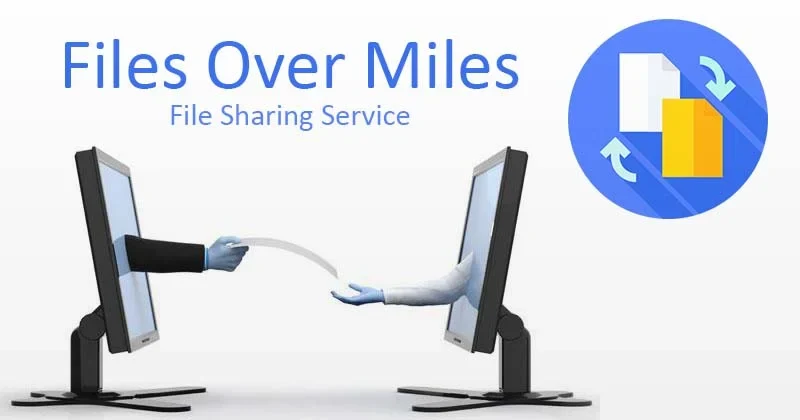In today’s fast-paced digital landscape, the way we transfer and manage data has evolved dramatically. Gone are the days when exchanging physical files or using outdated communication methods slowed down business and personal processes.
Thanks to the rise of modern technology, “files over miles” has become the new norm. This phrase refers to the seamless, efficient transfer of files across vast distances—whether from one continent to another or from your office to a colleague’s home.
In this post, we explore how transferring files over miles has revolutionized the way we collaborate, communicate, and grow businesses.
Table of Contents
What Does “Files Over Miles” Mean?
The concept of “files over miles” encapsulates the idea of transferring digital files across long distances.
Thanks to cloud storage, email, and other file-sharing services, it’s now possible to send documents, images, videos, and other types of files in seconds, no matter how far the recipient is.
Whether you’re sending a simple PDF to a colleague in another state or transferring large media files across international borders, “files over miles” refers to the ease with which these transactions occur.
The Technology Behind “Files Over Miles”
The backbone of this digital convenience is the cloud. Cloud computing platforms, such as Google Drive, Dropbox, and OneDrive, make it possible to store files remotely and access them from anywhere in the world.
Additionally, specialized file transfer services like WeTransfer, FTP servers, and even peer-to-peer sharing methods play crucial roles in enabling large or sensitive files to move smoothly across digital networks.
- Cloud Storage: With cloud storage, files are hosted on remote servers, making them accessible from any device with an internet connection. Whether you’re using a laptop in New York or a smartphone in Tokyo, your files are just a click away.
- File Transfer Protocol (FTP): FTP allows businesses to transfer large files securely across distances, even in areas with limited internet infrastructure.
- Peer-to-Peer (P2P) Sharing: This transfers files directly between devices, bypassing traditional servers and enabling faster, more efficient file exchanges.
Why “Files Over Miles” is Essential for Businesses
In the modern business environment, companies are increasingly operating on a global scale. Remote work, international collaboration, and outsourcing have made it essential for files to be transferred across miles in a matter of minutes.
Here are several reasons why “files over miles” is vital for businesses today:
- Global Collaboration: Whether you’re working with teams in different time zones or collaborating with international clients, the ability to send and receive files quickly and securely ensures that everyone is on the same page.
- Increased Productivity: Sending files over miles allows for faster decision-making, smoother workflow, and the elimination of bottlenecks caused by waiting for physical delivery.
- Cost Efficiency: Gone are the days of printing, shipping, and mailing physical documents. Digital file sharing is far more cost-effective and eliminates the need for expensive shipping and postal services.
- Security and Compliance: With advancements in encryption and secure file-sharing protocols, businesses can rest assured that sensitive files are protected during transit, which is especially important for industries dealing with confidential data.
Benefits of Transferring Files Over Miles for Individuals
While businesses benefit from this technological advancement, individuals also enjoy the perks of easy file transfers:
- Personal Sharing: Whether you’re sending family photos or personal documents, file transfers make it easier to share your memories with loved ones worldwide.
- Convenience: Forget about carrying USB drives or physical media. With digital file transfer, you can instantly share documents, presentations, and multimedia files anytime.
- Environmental Impact: By reducing the need for physical media, transferring files over miles helps decrease paper waste and energy consumption related to traditional shipping methods.
Best Practices for Secure File Transfers
When sharing files over long distances, ensuring that your transfers are secure is crucial. Here are some tips for safe and efficient file sharing:
- Use Strong Passwords: If you’re using cloud-based storage or file transfer services, make sure to use a strong password to protect your data.
- Enable Two-Factor Authentication (2FA): Adding an extra layer of security through 2FA ensures that even if someone tries to hack your account, they’ll face an additional barrier.
- Use Encryption: Many file-sharing platforms offer encryption features to protect your files during transit. Always opt for encryption to safeguard your data.
- Verify Recipient Information: Before sending sensitive files, double-check the recipient’s email address or file-sharing credentials to avoid mistakes.
Alternatives to Traditional File Transfer
While cloud storage and popular file-sharing tools dominate the landscape, there are numerous alternatives to traditional file transfer methods that offer flexibility, enhanced security, and other unique features.
Let’s dive into some of the most notable alternatives for transferring files over miles efficiently.
1. Email Attachments
Best for: Smaller Files (up to 25 MB)
Email attachments have long been one of the easiest ways to send files across distances. Most email providers, such as Gmail, Yahoo, and Outlook, allow users to attach documents, images, and other files directly to emails. For files smaller than 25MB, this method is quick, simple, and requires no additional software or sign-up.
When to Use:
- Quick exchanges of smaller documents.
- Personal file-sharing between individuals.
2. USB Drives & External Hard Drives
Best for: Large Files or No Internet Access
Despite the convenience of digital file transfers, USB drives and external hard drives remain a reliable alternative. For those in areas with limited internet access or when dealing with extremely large files (e.g., video files or high-resolution images), physically transferring files via a USB stick can be an efficient solution.
When to Use:
- Transferring large amounts of data in offline environments.
- Situations where the internet is unreliable or unavailable.
3. Peer-to-Peer (P2P) File Sharing
Best for: Real-Time File Sharing with Trusted Partners
Peer-to-peer file sharing allows users to send files directly to each other over the internet, without relying on a centralized server. Popular P2P platforms, such as BitTorrent and Resilio Sync, enable faster and more secure file transfers because the data is split into small chunks and distributed across multiple nodes.
When to Use:
- Sharing large files among a group of trusted individuals.
- Distributing data to many recipients, especially when bandwidth or server load is a concern.
4. File Transfer Protocol (FTP)
Best for: Large or Sensitive Files
FTP is a popular protocol used for transferring large files or batches of files between computers and servers. FTP clients like FileZilla and WinSCP allow businesses and individuals to upload files to an FTP server, where recipients can download them.
When to Use:
- Regular, high-volume file transfers.
- Secure transfers for sensitive data.
5. Online File Transfer Services
Best for: Quick, One-Time Transfers of Large Files
If you’re looking for a simple, no-frills way to transfer large files quickly without signing up for a service, platforms like WeTransfer or SendAnywhere provide excellent solutions. These services allow users to upload files, generate a shareable download link, and send it to recipients.
When to Use:
- One-off transfers of large files or documents.
- When you don’t need a long-term file storage solution.
6. File Sharing Apps for Mobile Devices
Best for: File Sharing on the Go
Mobile apps, such as AirDrop (iOS) and Nearby Share (Android), enable quick file sharing between devices without requiring an internet connection. These apps are designed for transferring files between smartphones, tablets, and computers over a local Wi-Fi or Bluetooth connection.
When to Use:
- Transferring files between mobile devices in close proximity.
- Instant file exchange when traveling or working remotely.
7. Blockchain Technology for File Sharing
Best for: Decentralized, Secure File Sharing
Blockchain technology, typically known as cryptocurrency, is also making waves in the data transfer world.
Decentralized file-sharing platforms like Storj and Filecoin allow users to store and transfer data securely and transparently. Data is broken into encrypted chunks and distributed across a decentralized network.
When to Use:
- Sharing highly sensitive data that requires extra security.
- Users are interested in blockchain technology and decentralized networks.
8. Direct Cloud Syncing (e.g., Google Drive, OneDrive)
Best for: Continuous File Access and Collaboration
Services like Google Drive, OneDrive, and Dropbox provide not only file storage but also continuous syncing across multiple devices.
Any changes made to a file are instantly synced across all devices, allowing for real-time collaboration, even when users are miles apart.
When to Use:
- Collaborative work on documents and files that require real-time access.
- Seamless synchronization between multiple devices.
Common Tools for Sending Files Over Miles
There are numerous tools available for individuals and businesses to send files over miles securely and efficiently. Some popular options include:
- Google Drive: Allows you to store and share documents, images, and videos securely.
- Dropbox: Known for its simple interface and reliability for both personal and business file sharing.
- WeTransfer: A no-signup-needed service that allows you to send large files up to 2GB for free.
- OneDrive: Microsoft’s cloud solution that integrates seamlessly with Windows users and offers secure file sharing.
Read Also: Discover Anywherestory Net: Your Fun Guide to Storytelling Magic
Conclusion
The phrase “files over miles” is more than just a catchphrase—it represents the technological evolution that has made the world more connected than ever.
The ability to send and receive files over vast distances has revolutionized the way we do business, collaborate, and even maintain personal relationships.
Understanding how to transfer files securely and efficiently is now an essential skill in the digital age, whether for work or personal use.
Embrace this modern marvel and take advantage of the incredible tools available to you. These tools allow your files to travel across miles in an instant without any barriers.
Ready to streamline your file transfer process? Explore these options and find the best method for your needs. Whether you’re an entrepreneur, remote worker, or just need to share files with friends, there’s a solution that makes “files over miles” easier than ever!





